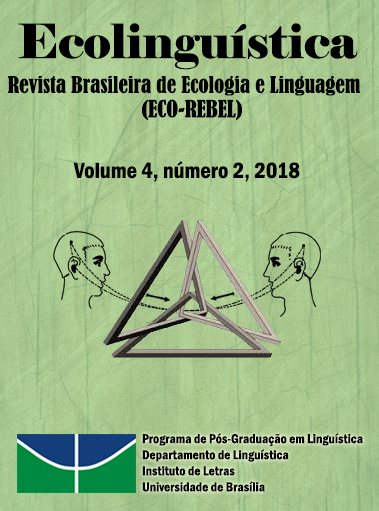The acceptance of virtual presentations at international conferences on education
Keywords:
Virtual presentations; climate change; international conferences; presentations via distance; environmental activism.Abstract
International academic conferences represent one manifestation of globalisation. At these conferences, academics come together to exchange ideas and experiences and to make contacts. Education is one of many academic fields on which a wide range of international conferences take place. Unfortunately, many people fly to such conferences, just contributing to climate change and other forms of ecological damage. This article focuses on the use of ICT for virtual presentations at these conferences, one way to enjoy the benefits of global interchange while lessening damage to the environment. Virtual presentations can be defined as presentations where the presenters do not attend the conference in person but instead do their presentations asynchronously or synchronously by electronic means. Thus, via virtual presentations, academics share and interact without travelling to the conference venue. This article has three parts. The first part explains ideas for doing virtual presentations. The second part of the article presents a study of conference organisers’ reactions to virtual presentations at international conferences on education. The third part discusses pros and cons of virtual presentations.
Downloads
References
ARDALAN, K. Globalization and information technology: Four paradigmatic views.Technology in Society,2011, 33(1), 59-72.
BARASH, D.Peace and conflict. Thousand Oaks, CA: Sage, 2002.Center for Teaching + Learning (n.d.). “Flipping” a class. Retrieved from http://ctl.utexas.edu/teaching/flipping-a-class
CLARK, D. Aviation Q&A: The impact of flying on the environment. The Guardian. Retrieved fromhttps://www.theguardian.com/environment/2010/apr/06/aviation-q-and-a(2010, April 6).
COUTO, H. H. do. Ecosystemic linguistics. In A. F. FILL& H. PENZ(Eds.), The Routledge handbook of Ecolinguistics. New York, NY: Routledge, 2018, p.149-161.
GEILING, A.Can eco-conscious passengers to anything to fly green? Smthsonian.com. Retrieved from http://www.smithsonianmag.com/travel/if-you-travel-and-care-about-environment-you-should-buy-carbon-offsets-180952222/?no-ist(2014, August 11).
GOOD, R. Best free video conferencing tools 2014.Retrieved from https://www.pinterest.com/robingood/best-free-video-conferencing-tools-2014, 2014.
IBÁÑEZ, M. B., GARCÃA RUEDA, J. J., MAROTO, D., & KLOOS, C. D. (2013). Collaborative learning in multi-user virtual environments.Journal of Network andComputer Applications36(6), 2013, p. 1566-1576.
JOHNSON, D. W., JOHNSON, R. T., & STANNE, M. B. Cooperative learning methods: A meta-analysis.Minneapolis, MN: University of Minnesota, 2000.
KYNDT, E., RAES, E.,LISMONT, B., TIMMERS, F., DOCHY, F., & CASCALLAR, E. A meta-analysis of the effects of face-to-face cooperative learning. Do recentstudies falsify or verify earlier findings? Educational Research Review 10, 2013, p. 133-149. doi:10.1016/j.edurev.2013.02.002
LINDAHL, R. A., OBAKI, S., & ZHANG,S. Curriculum Planning for a Globalized World.International Journal of Educational Reform12(2), 2003, p. 165-75.
RENANDYA, W. A. (2015). Teachers voices: Language teachers professional development group. Retrieved from https://www.facebook.com/groups/teachervoices.
SINGHAL M., & LIONTAS, J. (2004). Proceedings of the First International Online Conference of Second and Foreign Language Teaching and Research. Retrieved from http://www.readingmatrix.com/onlineconference/proceedings2004.html
SLAVIN, R. Synthesis of research on cooperative learning. Educational Leadership, 48(5), 1991, p. 71-82.
STIBBE, A. (2015). Ecolinguistics: Language, ecology, and the stories we live by. Abingdon, United Kingdom: Routledge.
TechSmith (2015). Camtasia. Retrieved from https://www.techsmith.com/camtasia.html
Downloads
Published
How to Cite
Issue
Section
License
Authors who publish in this journal agree to the following terms:
Authors retain copyright and grant the journal the right of first publication. The work is simultaneously licensed under the Creative Commons Attribution License allowing the sharing of the work with acknowledgment of the authorship of the work and initial publication in this journal.
Authors are authorized to enter into additional contracts separately for non-exclusive distribution of the version of the work published in this journal (e.g., publishing in institutional repositories or as book chapters), with acknowledgment of authorship and initial publication in this journal.
Authors are allowed and encouraged to post and distribute their work online (e.g., in institutional repositories or on their personal page) at any point before or during the editorial process, as this can bring about productive revisions as well as increase impact.
Citation of published works (See The Effect of Free Access).



3.png)



